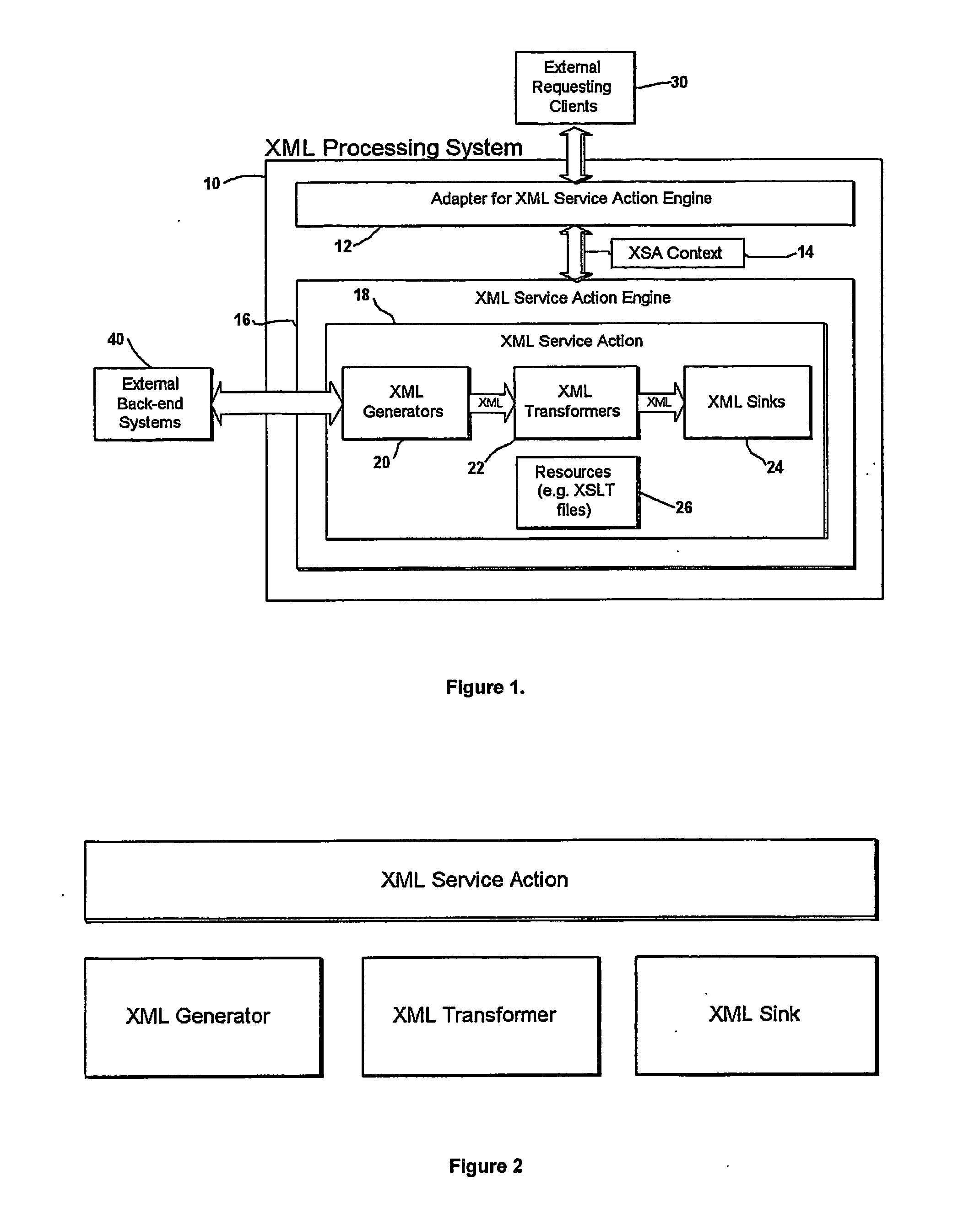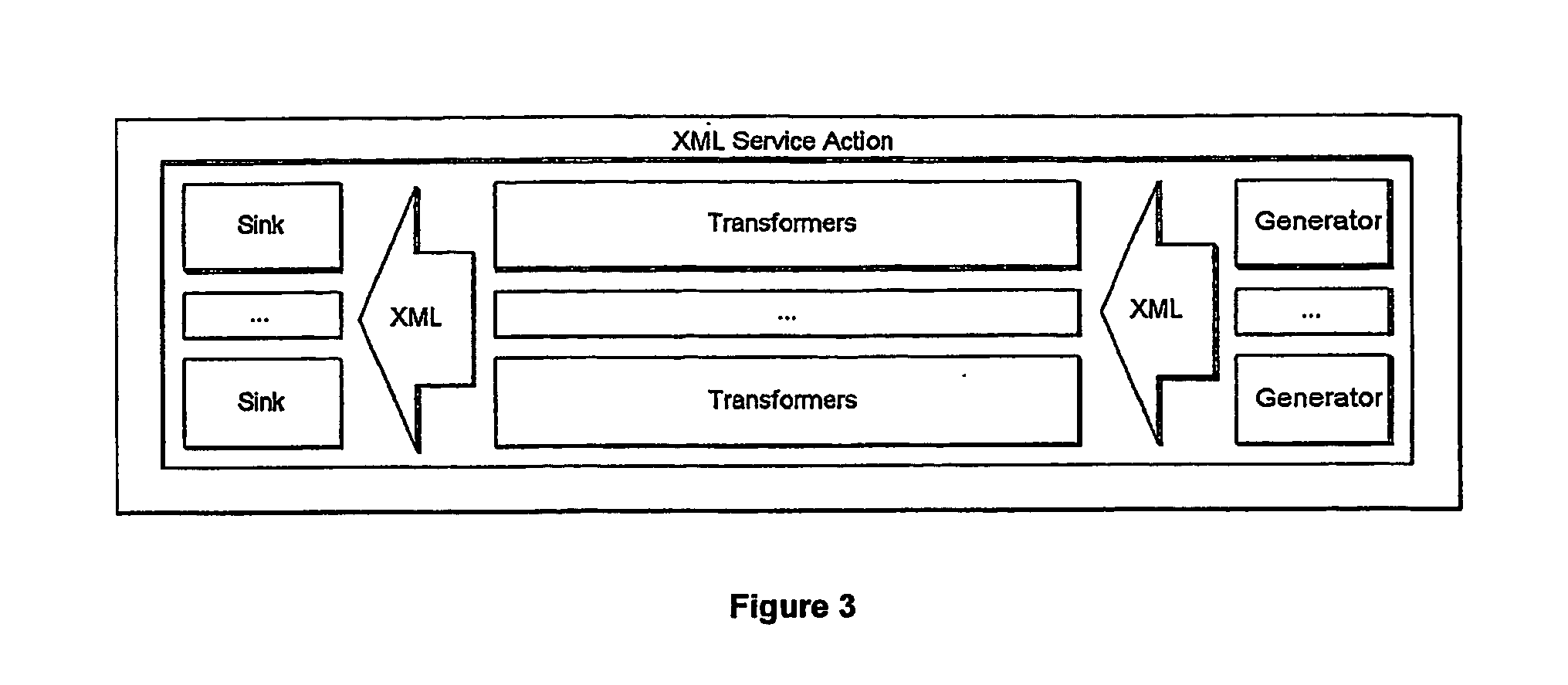System and method for a context-independent framework for management and execution of xml processing tasks
a context-independent framework and task technology, applied in the field of management systems for tasks, can solve the problems of difficult communication between applications, application is not able to communicate freely with other applications, and may be beneficial, and achieve the effect of reducing or even eliminating the need for creating, and solving better or more easily
- Summary
- Abstract
- Description
- Claims
- Application Information
AI Technical Summary
Benefits of technology
Problems solved by technology
Method used
Image
Examples
Embodiment Construction
[0041] The embodiments described herein are not intended to be exhaustive or to limit the invention to the precise forms disclosed. Rather, the embodiments selected for description are described so that those skilled in the art may utilize their teachings. Most notably, although XML processing is frequently referred to herein, the invention is not limited to XML processing or XML server-side applications but can equally be applied to processing of any type of structured data.
[0042] The following discussion is intended to provide a brief, general description of a suitable computing environment in which the invention may be implemented. Although not required, the invention will be described in the general context of computer-executable instructions, such as program modules, being executed by a personal computer. Generally, program modules include routines, programs, objects, components, data structures, etc., that perform particular tasks or implement particular abstract data types. ...
PUM
 Login to View More
Login to View More Abstract
Description
Claims
Application Information
 Login to View More
Login to View More - R&D
- Intellectual Property
- Life Sciences
- Materials
- Tech Scout
- Unparalleled Data Quality
- Higher Quality Content
- 60% Fewer Hallucinations
Browse by: Latest US Patents, China's latest patents, Technical Efficacy Thesaurus, Application Domain, Technology Topic, Popular Technical Reports.
© 2025 PatSnap. All rights reserved.Legal|Privacy policy|Modern Slavery Act Transparency Statement|Sitemap|About US| Contact US: help@patsnap.com



